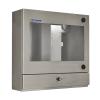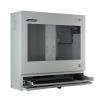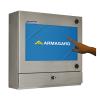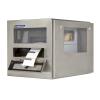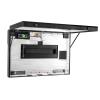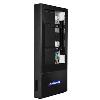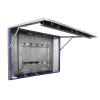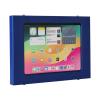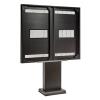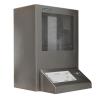How to Prevent Computers Becoming a Contaminant in Food Manufacturing
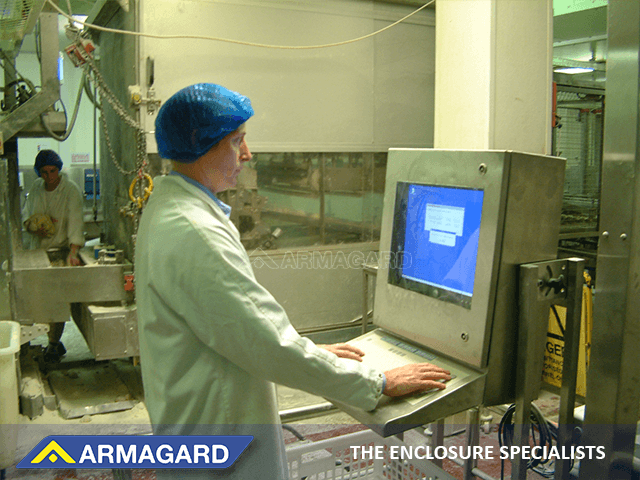
Computers have become a key asset in food production processes. However, they represent a contamination risk in terms of gathering dust and food residue. This makes them a breeding ground for germs, which can quickly be transferred by food handlers, leading to widespread contamination across a facility. How can this be prevented?
Contamination is arguably the single biggest threat to any food manufacturing facility, which is why extreme measures are taken to ‘germ-proof’ the production line. However, some of the most common ways germs are spread include ‘hands to food’ or ‘food to hands to another food product’.
Should this occur on the food processing floor, not only have you got a full-blown contamination to deal with, which could lead to a complete shutdown in operations, you’re looking at huge financial losses in terms of food wastage, a standstill in production and idle staff. That’s not to mention a visit from your local health inspector!
Food Contamination by Computer
In an age where computers are being integrated more and more across facilities handling food, the transfer of germs from computer to food and vice-versa is a very real problem. Exposed computer systems alone are a magnet for dust and in a food environment, where computers are used on a daily basis, there’s a high-risk of food residue accumulating.
Therefore, there’s a real need to stop the problem at the source. You could take computers apart to ensure that any dust or filth is cleaned out, but let’s face it, you’re not going to do that. You could implement a rigorous cleaning process that can be carried out every night, after hours, but chances are that won’t be well received.
Instead, you can opt to house critical computers in a food grade (316), stainless steel environmental enclosure. Why? They’re purpose-built to prevent contamination from computers in food environments. Encased in an enclosure, the computer is impervious to dust and food residue.
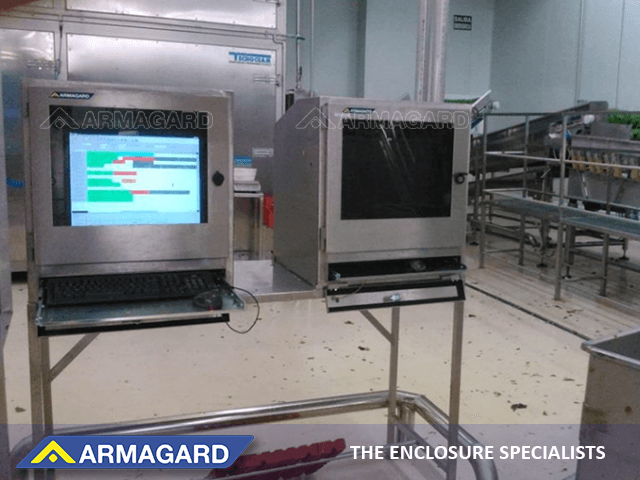
Equally, the antibacterial properties of the food grade (316) stainless steel gives the enclosures a natural defence against the build-up of food residue and germs, plus it prevents the transfer of bacteria from computer, to hands, to food and ultimately preventing widespread contamination and the shutdown of production.
Better still, enclosure units are very low-maintenance and can be cleaned with chemicals used to prevent the spread of bacteria, without any risk of corrosion. The waterproof properties of stainless steel enclosures serve to benefit food manufacturing facilities that have washdown procedures in place as they’re capable of withstanding a jet washing.
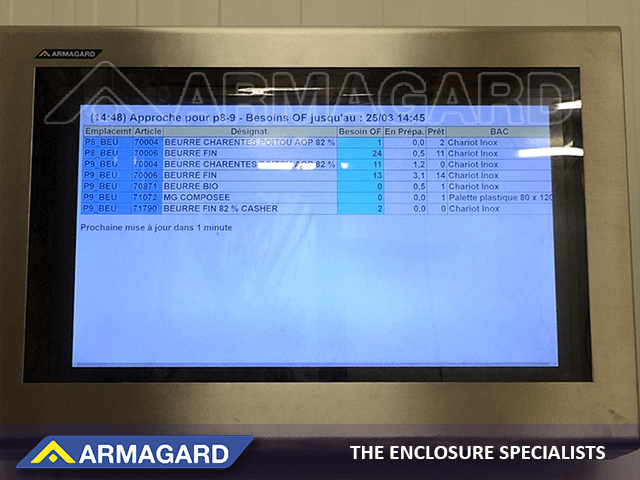
What’s more, enclosures are designed to keep computers operating in various conditions. For instance, one of the most common problems in refrigerated food processing facilities is condensation. Not only can water gather in puddles and form droplets on pipes, it’s thick in the air.
It goes without saying that condensation can cause damage to electronics, but the additional headache for food facilities is that condensation carries bacteria, which can settle on computers and potentially lead to germ transfer from computer to food.
Condensation and humidity are not the end of the challenges for computer use in food plants. For instance, meat factories are required to operate at sub-zero temperatures as determined by food authority regulations. Freezing temperatures are required to maintain the ‘cold chain’, break the cold chain and bacteria can grow on the meat.
Meat handlers then come into contact with computers and they become a breeding ground for germs. Then there’s a domino effect. Throughout the working day, several meat handlers access the computer station and the spread of microbes, like Salmonella, results in high-level contamination.
It cannot be emphasised enough that exposed computers on the food processing floor are a ready-made health hazard. By making computers a bacteria-free zone, you stand to prevent a complete shutdown of your facility caused by germ transfer from ‘unclean’ computers.
The added value of using computer enclosures in food manufacturing
Aside from preventing food contamination caused by the transference of germs from computer to food, the real value of adding computer enclosures to the food production floor is that they stop food debris and dust getting in. This prevents an accumulation of grease, grime and dust, which can do irreversible damage to computer systems.
If computers are the core of your food processing operation, the financial implications and the impact on your business reputation as a whole do not bear thinking about if a computer glitch brings your entire production process to a halt.
Essentially, computer enclosures are not a short-term fix, they bring long-term stability to your computer stations, not only preventing your computers from becoming a potential health hazard, but stopping them from ending up in the ‘computer graveyard.’
Follow up with Armagard
Armagard is a market leader in the design and manufacture of innovative environmental enclosures for industrial computers and printers. With more than 25 years of experience, we work with some of the largest companies in the food industry.
To learn more about computer enclosure protection for your food processing operation, visit www.armagard.com or call +1-866-434-0807.
